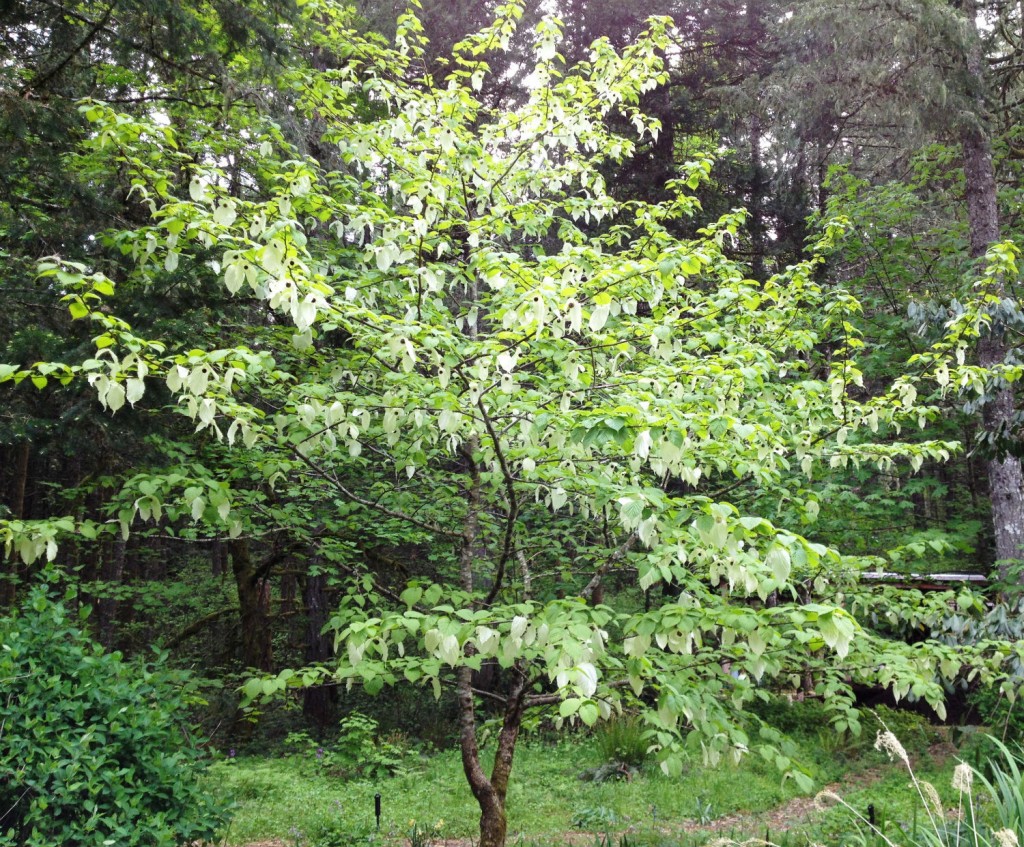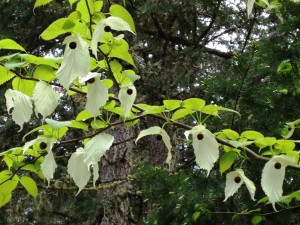
Last month in this column, I talked about modern-day plant hunter Dan Hinkley. One of his favorite plants is the white dove tree (Davidia involucrata). This month, the white dove tree is blooming in my garden. Festoons of white-green bracts look like wings. They shelter round black inch-wide flowers that could resemble doves’ eyes.
This thirty-foot tall deciduous tree from China is inextricably linked with another plant hunter from the turn of the last century—Ernest H. Wilson.
It’s always great to have at least one remarkable plant in your garden that offers a fascinating back story. This tree both started and almost stopped Wilson’s career. Here’s a tale as unusual as the blossoms themselves.
In 1900, Veitch Nursery sent Wilson, a twenty-two year old neophyte plant hunter, on his first expedition. His mission—bring back seeds of the fabled white dove tree, discovered in 1869 by the French missionary, Father Armand David, whose Latinized name the tree bears.
Wilson undertook a grueling search in the rugged mountains of China, and finally found this rare specimen. However, when he went to collect the seed, the tree was a stump—cut down to build a farmer’s house.

Heartbreak.
But that wasn’t the last of his dove tree trials. Wilson didn’t give up. He eventually found other trees and sent seeds back home. In 1911, when the tree first bloomed at the Veitch Nursery, it was a horticultural sensation. Wilson’s reputation as a plant hunter seemed assured.
Except not.
Wilson’s tree was only a runner-up in the first-to-bloom-in-Europe category. He had been aced out by French missionary, Father Paul Guillaume Farges, who had taken seed to France in 1899. Wilson didn’t realize that the white dove tree had bloomed there in 1906. England had to relinquish exclusive claim to dove tree glory.
These things mattered.
Wilson was bitter but not deterred. He went on to an extensive plant hunting career—he later sent back, among hundreds of other plants, Lilium regale, commonly sold as the Easter lily. His name is appended to sixty species and varieties, such as Phalaenopsis wilsonii. He earned the sobriquet “China Wilson.”
While not widely available in the U.S., offspring of Wilson’s first find is sold at Forest Farm and Digging Dog Nursery. Hardy to Zone 6 when established, you can bring a young plant along in the protection of a greenhouse. And when you see his name on other plant labels—you’ll know the story of the first tree that broke Wilson’s heart.


